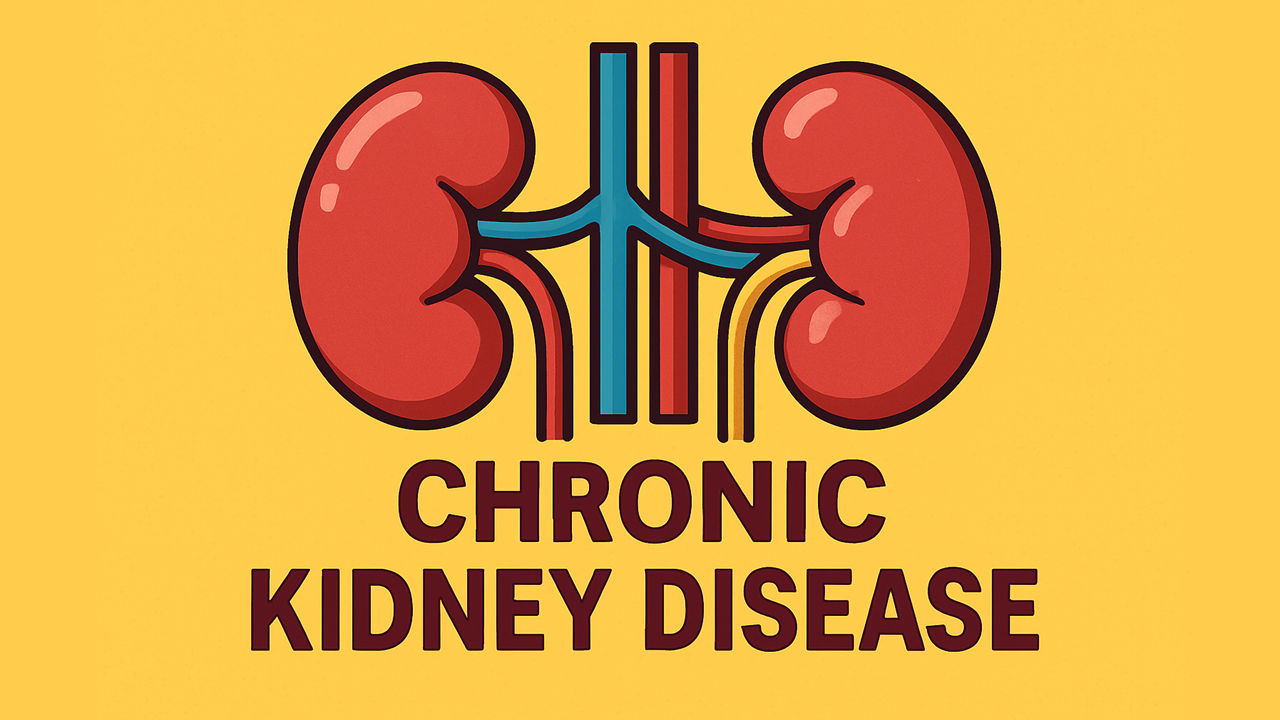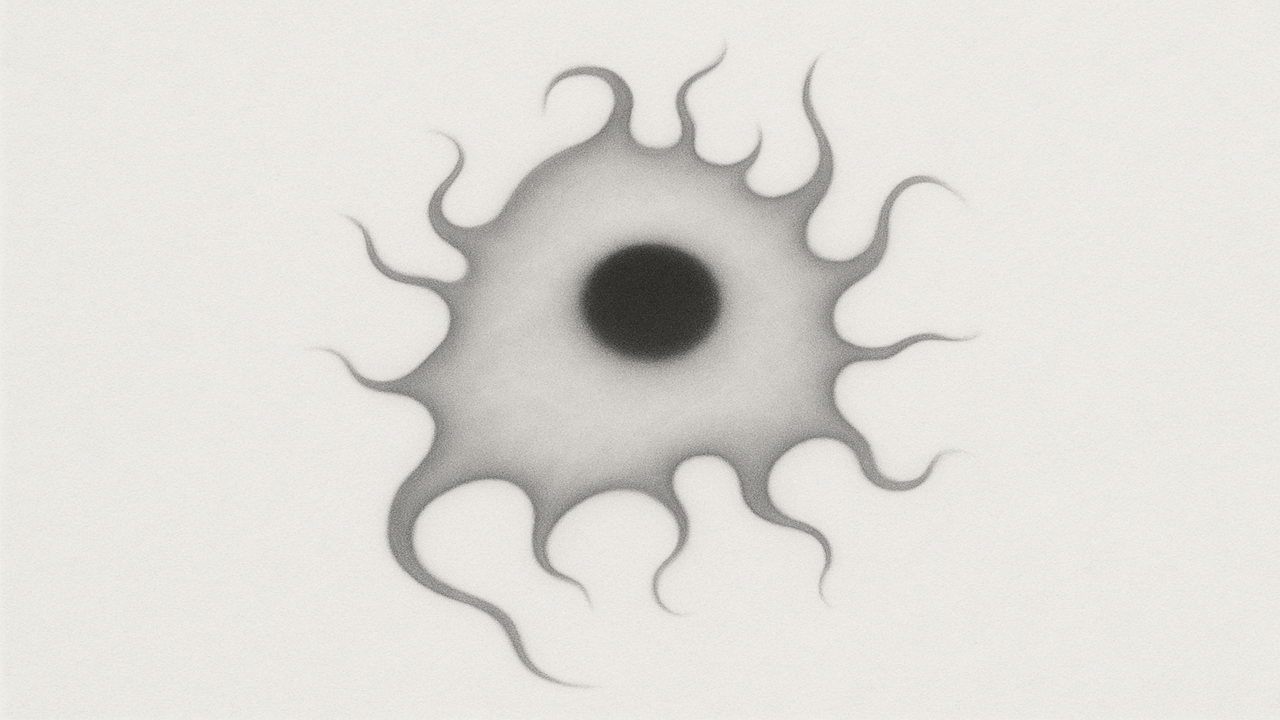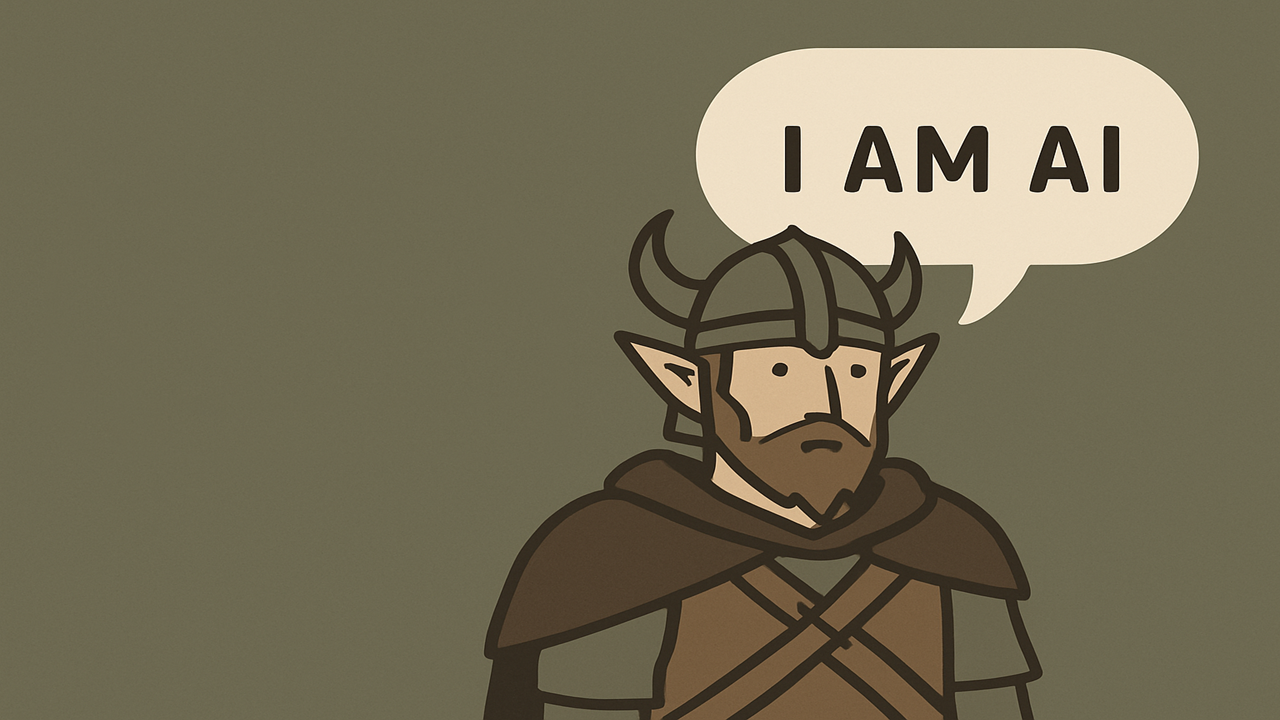Sukunaarchaeum mirabile: The Minimal Cell That Acts Like a Virus
Introduction – A Microbe on the Edge of Life
How small can a genome shrink before a cell stops being “alive”? Biologists once answered this by contrasting self‑sufficient cells with viruses that hijack hosts. The May 2025 discovery of Candidatus Sukunaarchaeum mirabile forces a reassessment. This archaeon possesses the tiniest archaeal genome ever recorded—238,000 base pairs [1]—and has surrendered virtually every metabolic pathway, yet it still retains ribosomes and a membrane, hallmarks usually reserved for bona fide cells. Its lifestyle, balanced precariously between autonomy and dependency, redraws the boundary between cellular life and viral existence.
Discovery in a Plankton Cell
Researchers led by Ryo Harada isolated a single dinoflagellate plankton cell (Citharistes regius) from coastal seawater and performed single‑cell metagenomic sequencing to examine its symbionts [1]. Amid expected algal and bacterial genomes, they assembled an anomalously small circular chromosome with an exceptionally low G+C content (≈ 28.9 %). Genes for archaeal ribosomal RNA revealed its identity as a member of the third domain of life, not a virus or host contaminant. Because the organism has not been cultured, it was provisionally named “Candidatus Sukunaarchaeum mirabile,” honoring the Japanese deity Sukunabikona, famed for his diminutive stature, and the Latin mirabile—“marvelous.”
Microscopy failed to visualize the parasite directly, implying either extreme size (< 200 nm) or intimate embedding inside host or co‑symbiont membranes. The dinoflagellate host’s complex intracellular milieu—already home to a cyanobacterium and two bacteria—appears to provide Sukunaarchaeum with nutrients and ATP, shielding its minimal genome from the rigors of independent existence.
Genomic Architecture – A Blueprint for Replication Only
A circular genome of 238 kbp displaces Nanoarchaeum equitans (≈ 490 kbp) as record holder for archaeal genome minimality [2]. Out of 222 predicted genes, only 189 encode proteins, while 2 code for ribosomal RNAs and 31 for tRNAs—enough to assemble functional ribosomes. More than 70 % of the annotated proteins participate in DNA replication, transcription, or translation, forming what the authors call a “replicative core.”
Crucially, recognizable genes for amino‑acid, nucleotide, lipid, or energy metabolism are absent. Sukunaarchaeum cannot synthesize building blocks, generate ATP, or fix carbon. Effectively, it is a replication machine that outsources everything else to its host. This pattern resembles bacterial endosymbionts of insects, yet Sukunaarchaeum goes further by discarding even the few metabolic remnants those symbionts retain.
Despite radical reduction, a quarter of the genome encodes a handful of gigantic (> 4,000‑aa) membrane proteins. Bioinformatic motifs suggest roles in adhesion and nutrient uptake; the parasite may erect molecular siphons to import metabolites directly from host cytoplasm. Such expansion of host‑interaction genes alongside deletion of metabolic genes mirrors strategies seen in many obligate parasites.
Box 1 – Key Genome Statistics for C. Sukunaarchaeum
| Feature | Value | Comparison |
| Genome size | 238,000 bp | 2× smaller than N. equitans |
| Predicted genes | 222 | E. coli has ≈ 4,400 |
| tRNA genes | 31 | Enough for all codons |
| GC content | 28.9 % | Typical marine archaeal average ≈ 40 % |
| Metabolic pathways | None detected | Even Mycoplasma retains glycolysis |
(Compiled from Harada et al. 2025 data [1].)
Blurring the Virus–Cell Divide
Viruses are defined operationally: they possess no ribosomes and no energy metabolism, assembling progeny only inside a host. Sukunaarchaeum challenges this dichotomy:
| Attribute | Virus | Sukunaarchaeum |
| Ribosomal genes | Absent | Present |
| Independent metabolism | Absent | Absent |
| Cell membrane | Absent (protein capsid) | Present lipid membrane |
| Mode of replication | Virion assembly | Binary-like fission (inferred) |
| Genome size | 2–2,500 kbp | 238 kbp |
The archaeon retains translation hardware—one of life’s costliest machineries—yet forfeits every pathway that would supply amino acids, nucleotides, or ATP to run that hardware. Functionally, it can copy itself but only if the host supplies raw materials and energy. This hybrid strategy led Harada et al. to call it “the closest cellular entity yet to a viral strategy of existence” [1].
Genome size further muddles boundaries: giant viruses such as Pandoravirus salinus harbor 2.5 Mbp of DNA, tenfold larger than Sukunaarchaeum [6]. Size alone hence fails to discriminate viral from cellular life. Instead, the presence—or absence—of translation apparatus emerges as a more telling criterion.
Evolutionary Context – A New Archaeal Branch
Phylogenetic analyses place Sukunaarchaeum on a long, solitary branch, distinct from Euryarchaeota, TACK, and even the nano‑sized DPANN superphylum that includes Nanoarchaeum [1]. Its deep divergence suggests an ancient lineage that has evolved under strong reductive pressure, perhaps for hundreds of millions of years within symbiotic niches. Long‑branch attraction complicates precise placement: some algorithms cluster it with DPANN; others align it nearer Methanobacteriales. All agree, however, that it constitutes a previously unnoticed phylum‑level group.
A global scan of the Tara Oceans metagenomic database reveals environmental sequences matching Sukunaarchaeum in diverse marine sites, hinting at a cosmopolitan but cryptic radiation of similar ultra‑reduced archaeal parasites. These relatives likely inhabit small eukaryotic plankton rather than free seawater, explaining why they escaped earlier detection by size‑fractionated surveys.
The discovery resonates with DPANN, whose members often show extensive genome reduction, host dependence, and rapid sequence evolution. Yet Sukunaarchaeum pushes these traits to extremes, approaching a theoretical minimum genome for a translation‑competent cell.
Reductive Evolution – How Low Can You Go?
Intracellular symbionts generally evolve by jettisoning genes their hosts can supply. Over evolutionary time they accumulate deletions, pseudogenes, and a bias toward AT‑rich DNA—hallmarks all seen in Sukunaarchaeum. Comparative genomics suggests a plausible trajectory:
Free‑living ancestor with complete metabolism.
Facultative symbiont loses redundant pathways (e.g., vitamin synthesis).
Obligate symbiont discards most biosynthesis, retains housekeeping genes.
Ultra‑reductive parasite like Sukunaarchaeum sheds all metabolism, keeping only replication.
What prevents the final leap to “virushood”? Ribosomes may be the last indispensible holdout: once lost, translation must be outsourced entirely and the entity ceases to be a cell. Theoretical models predict a lower limit of roughly 200–300 genes—astonishingly close to Sukunaarchaeum’s complement—below which translation cannot be maintained.
Implications for Origin‑of‑Life and Virology
1 – Redefining Life’s Minimal Requirements
Biology textbooks often list metabolism as a core life trait. Sukunaarchaeum shows that a cell can relinquish metabolism yet remain on life’s tree if it retains a translation system and a membrane. The discovery compels educators and philosophers to refine criteria: is ribosome possession the ultimate litmus? Or must an organism also generate its own energy?
2 – Possible Evolutionary Bridge to Viruses
Some virologists posit that viruses originated from ancient cells that lost translation. Sukunaarchaeum may represent such an intermediate. If evolutionary lineage can be traced from metabolically complete archaeal ancestors through ultra‑reduced forms to ribosome‑lacking entities, then the cell‑to‑virus transition might be an ongoing process rather than a singular ancient event.
3 – Hidden Biodiversity in Symbiotic Niches
The finding underscores how much genomic novelty remains concealed within host‑associated niches. Parasites too small to retain metabolic genes also elude traditional cultivation. Metagenomics and single‑cell sequencing are thus essential not only for ecology but for charting fundamental limits of biological organization.
Limitations and Open Questions
Pre‐culture status – Sukunaarchaeum remains uncultured, and therefore morphology, exact cell size, and division mode are inferred indirectly. Visualization via cryo‑electron tomography and fluorescence in situ hybridization is needed.
Host specificity – While discovered in a dinoflagellate, environmental DNA hints at multiple hosts. Determining host range will require co‑cultivation experiments or single‑cell “mini‑metagenomes” from diverse plankton.
Genome completeness – Although the chromosome is circular and fully assembled, tiny plasmids or proviruses could remain undetected. Additional long‑read sequencing may reveal accessory elements.
Metabolic vestiges – Bioinformatics finds no metabolic genes, but cryptic functions might lurk among the 50 % of proteins classified as “hypothetical.” Functional assays could uncover minimal pathways overlooked by homology searches.
Future Directions
Imaging and Localization – High‑resolution microscopy combined with antibodies against the giant membrane proteins could pinpoint where Sukunaarchaeum resides in host cytoplasm.
Stable Co‑culture – Engineering simplified synthetic communities (host + parasite) would allow manipulation and metabolic flux analysis, revealing nutrient exchanges.
Experimental Evolution – Long‑term passaging might push further genome erosion, testing whether translation genes are indeed the final constraints.
Broader Surveys – Targeted PCR primers and machine‑learning classifiers could uncover more ultra‑reduced archaea in freshwater, soil, or animal microbiomes.
Philosophical Synthesis – Insights from Sukunaarchaeum should be integrated into astrobiology, where defining “life” affects mission designs searching for biosignatures on Mars or icy moons.
Conclusion
Candidatus Sukunaarchaeum mirabile compresses cellular life into its barest essentials: a membrane, a repertoire of tRNAs and rRNAs, and a toolkit to copy DNA and translate proteins. Everything else—energy, metabolites, even visibility under a light microscope—is ceded to its host. By doing so, this archaeon lands squarely in the no‑man’s land between cell and virus, proving that life’s frontier is a spectrum, not a wall. It recasts our notions of autonomy, reveals a hidden vein of archaeal diversity, and invites us to reconsider whether metabolism or translation defines the cellular state. As genomic exploration marches on, even stranger biological minimalists may surface, each one teaching us anew how flexible, and yet how constrained, living systems can be.
References
Harada, R. et al. (2025). A cellular entity retaining only its replicative core: Hidden archaeal lineage with an ultra‑reduced genome. bioRxiv preprint.
Huber, H. et al. (2002). “A new phylum of Archaea represented by a nanosized hyperthermophilic symbiont.” Nature 417: 63–67.
Wilcox, C. (2025). “Microbe with bizarrely tiny genome may be evolving into a virus.” Science News feature.
Koumoundouros, T. (2025). “Strange cellular entity challenges very definition of life itself.” ScienceAlert.
Muñoz Velasco, I. (2025). “El hallazgo de Candidatus Sukunaarchaeum mirabile…” Universidad Nacional Autónoma de México blog.
Legendre, M. et al. (2014). “Thirty‑thousand‑year‑old distant relative of giant icosahedral DNA viruses with a pandoravirus morphology.” Proceedings of the National Academy of Sciences 111(11): 4274‑4279.
About the Author
Harry Negron is the CEO of Jivaro, a writer, and an entrepreneur with a strong foundation in science and technology. He holds a B.S. in Microbiology and Mathematics and a Ph.D. in Biomedical Sciences, with a focus on genetics and neuroscience. He has a track record of innovative projects, from building free apps to launching a top-ranked torrent search engine. His content spans finance, science, health, gaming, and technology. Originally from Puerto Rico and based in Japan since 2018, he leverages his diverse background to share insights and tools aimed at helping others.































